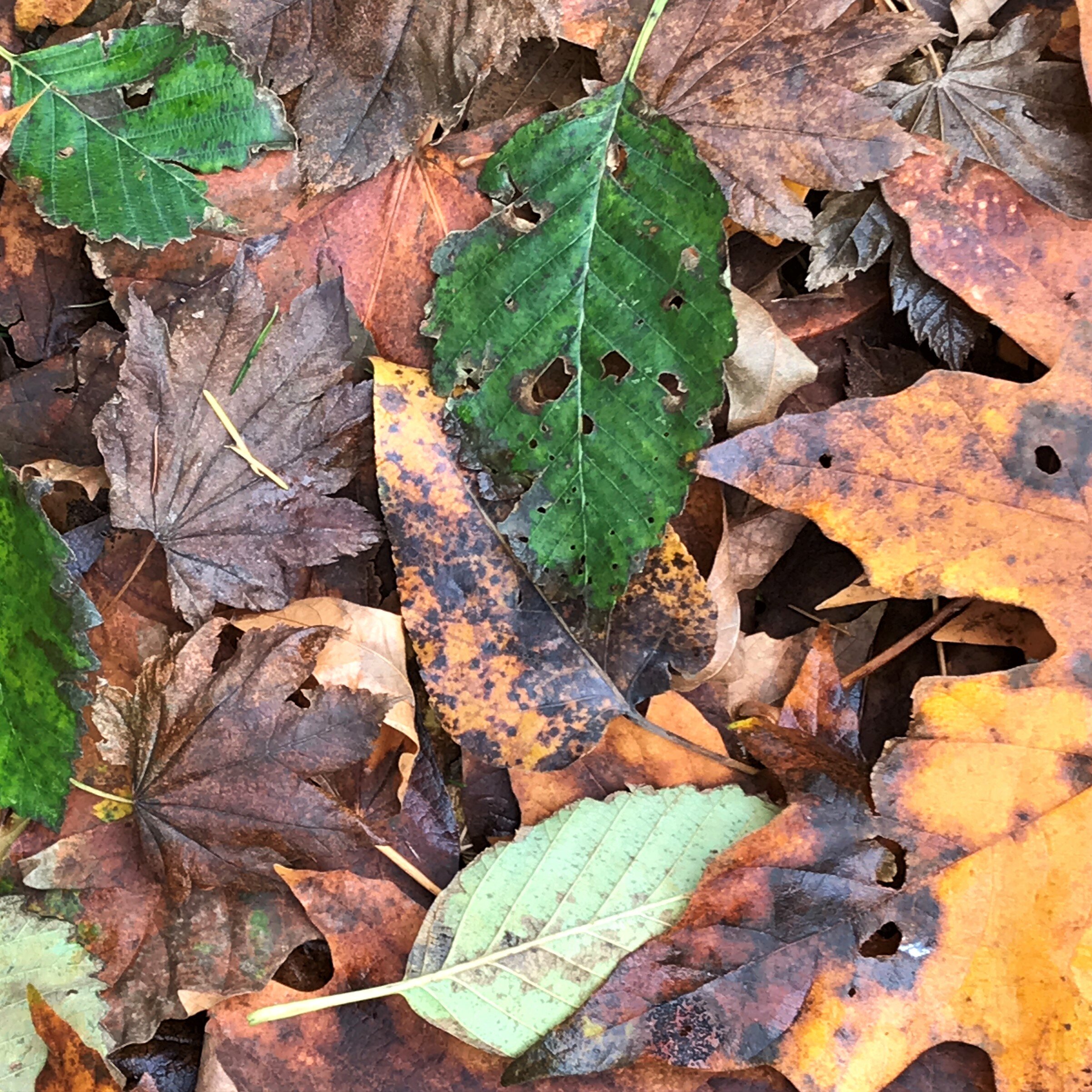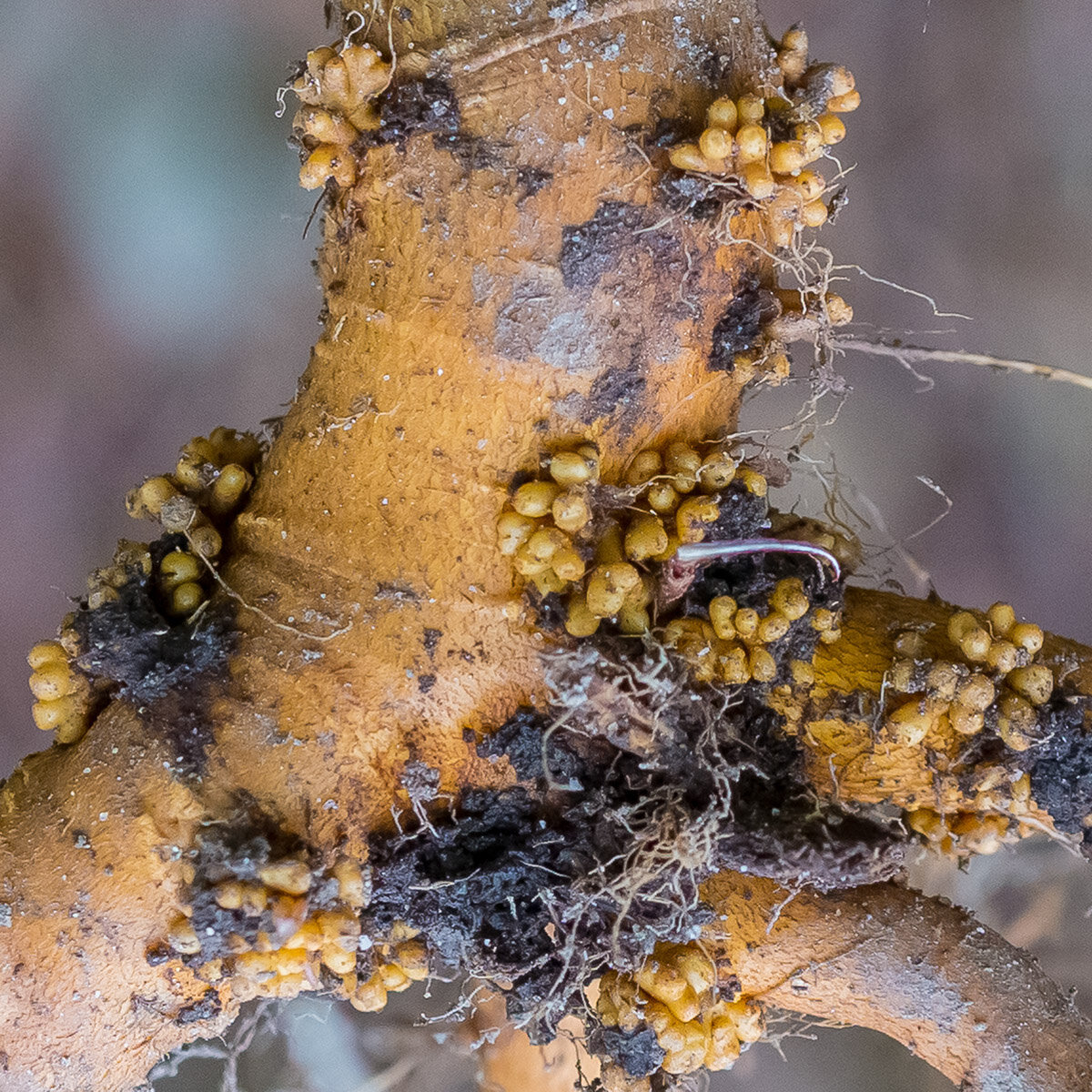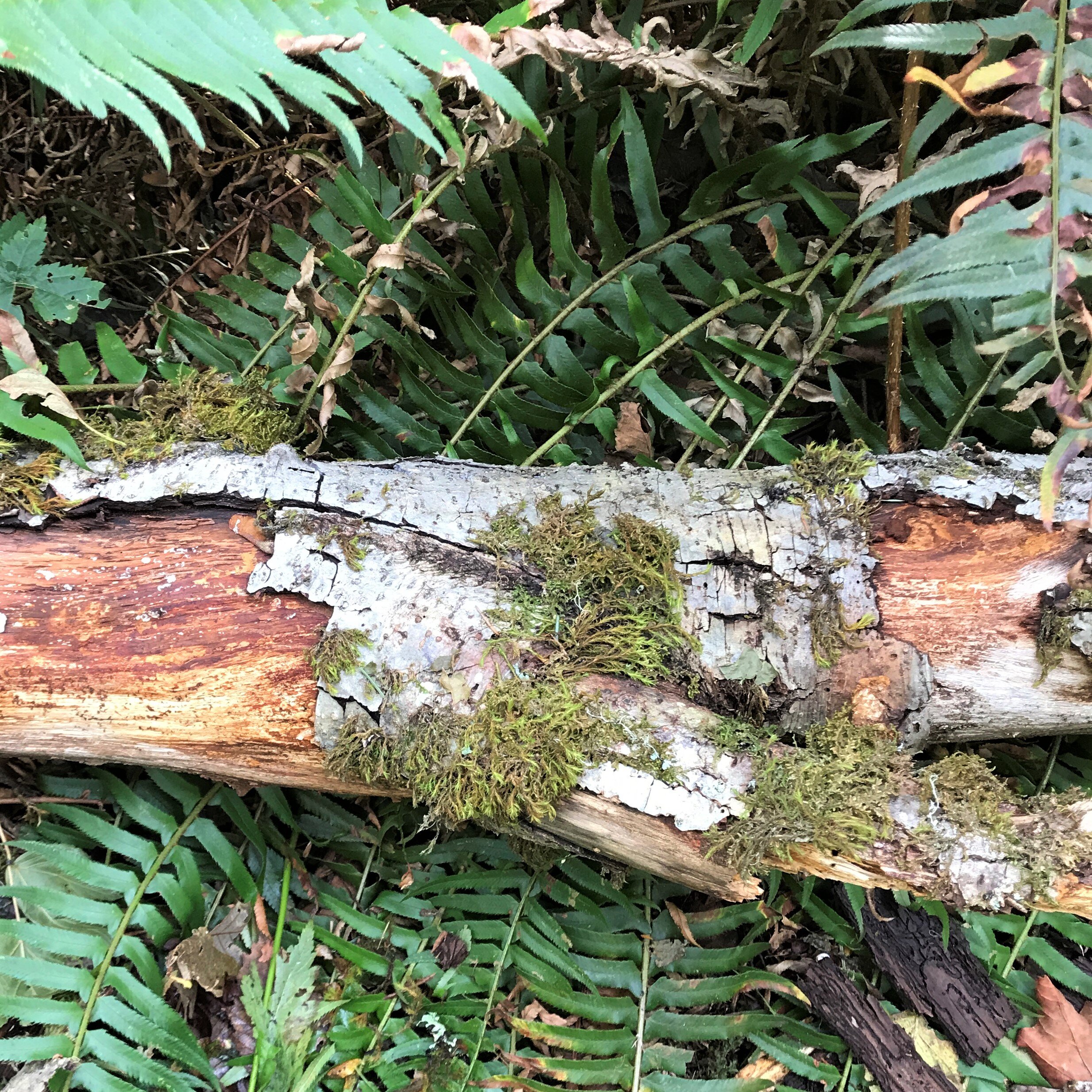It’s November. Leaves have turned and most have already dropped. Look at the fall colors on the ground: brown, yellow, orange, red …
Wait a minute! Why are the alder leaves still green?
The leaves in this picture are from bigleaf maple, Acer macrophyllum; vine maple, Acer circinatum; black cottonwood, Populus trichocarpa; and red alder, Alnus rubra — a common mix of leaves in the PNW.
Most of the leaves are yellow or brown. So why are many alder leaves still green?
While scientists are not certain about all factors, the best answer seems to be in forest economics:
The forest operates on a trickle-down economic system, with a 100% estate tax.
The currency of the forest is nitrogen. Nitrogen is often the growth-limiting factor in a forest. This means that trees would grow bigger and faster if more nitrogen were available. The scarcity of nitrogen limits the growth of trees.*
The workers in this economic system are the nitrogen-fixing bacteria that live underground in nodules on alder roots. They are primary producers of wealth.
Alder trees that host these bacteria suck up the nitrogen, becoming wealthy in the process.
Every fall, alder leaves trickle down while they are still green to enrich the soil. From the soil, the nitrogen then becomes available for the entire forest. Other types of trees recapture nitrogen from chlorophyll before the leaves fall off, but not alder trees.
When short-lived alders die at maybe 60-80 years of age, they face an estate tax of 100%. In other words, they put their entire wealth of nitrogen back into the soil, available for all to use.
As an analogy, suppose you are giving clothes to Goodwill. Most people would first empty their pockets. But sufficiently wealthy people might think: “It’s too much trouble to fish around in the pockets and remove the money. Let’s just leave it there for Goodwill.” This is what alders do.
Note: This analogy is for your enjoyment only. In human society, trickle-down economics is widely debunked. Maybe it would work better with a 100% estate tax!
* Footnote: Why is nitrogen scarce?
How can nitrogen be scarce when most of the atmosphere — nearly 4/5ths of it — is pure gaseous nitrogen ? Here’s the answer: The nitrogen in the atmosphere is in the form of N2 molecules (pairs of nitrogen atoms). The two nitrogen atoms hold onto each other with an exceptionally strong grip called a triple covalent bond. In the entire history of life on earth, few if any plants or animals have evolved the ability to break apart N2 molecules into usable forms of nitrogen. But various types of microbes can do it.
In PNW forests, bacteria in the genus Frankia are the champion nitrogen liberators (called nitrogen “fixers”). Frankia live in soil, especially in tiny nodules along the roots of alders. These bacteria take in N2 from tiny air bubbles in the soil. The bacteria break down the N2 into water-soluble nitrogen ions.
The host alder then sucks up some of these nitrogen ions and uses them to grow. In return, the alder provides food energy — i.e., sugar from photosynthesis — that the bacteria need to live.
For more on why many alder leaves on the forest floor are still green, press here.
For more on why leaves change color in the fall and drop off, press here.



